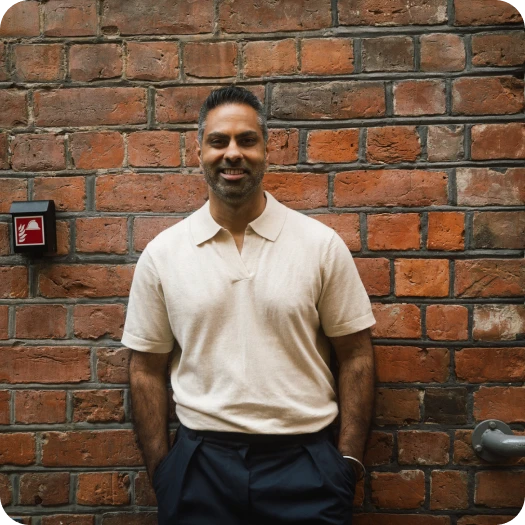How to be a good storyteller (it’s a learned skill, not a talent)


In this post, we're going to talk about how to be a good storyteller and why being a good storyteller is important. Everyone loves a good story. But not everyone is good at telling them.
If you're "not a natural storyteller," how do you learn how to tell a good story? That's the challenge I want to share with you today.

Everyone loves a great story.
The good news: telling a good story is a skill — NOT something you’re born with. Thousands of my students have used stories effectively to land their Dream Job, pitch clients, meet VIPs, or even make new friends.
I'll give you an example. This video illustrates how stories can completely change the effectiveness of your answers during a job interview:
Celebrities do this all the time. Have you noticed how celebs always have fun, amusing stories to tell?
While it seems like these stories unfold off-the-cuff, they’re actually tested, refined, and practiced for months in advance. In fact, these stories often go through many iterations before they’re ever ready to be told in front of an audience.
If you want to see someone who applies rigorous testing and practice before taking their work to a public stage, look at Chris Rock. It takes him at least 6 months just to develop an HOUR-long stand up show. But by the time Rock arrives on stage, he’s flawless.
You can take this same approach with your storytelling. And you can apply your storytelling to your business or your career to move up in the world.
How to be a good storyteller in 5 steps
Follow these 5 steps and you, too, will start telling captivating stories (ones that build instant rapport with anyone):
STEP 1: Build your Story Toolbox
STEP 2: Cut out the unnecessary
STEP 3: Get crystal clear on your point
STEP 4: Perfect the story’s package
STEP 5: Use low stakes environments to test
Step 1: Build your Story Toolbox
The number one strategy for telling great stories is to keep a Story Toolbox -- a place to write down interesting stories that you can later develop.
This is much simpler than it sounds.
You can create your Story Toolbox with any tool you prefer:
- Google docs (what I use)
- Microsoft Word
- Microsoft Excel
- Evernote
- Even a physical notepad
The tool doesn’t matter. What's important is writing them down.
These stories could be funny, entertaining, or serious. Designate a place to store them and start by adding five stories.
If you can’t think of any at first, think back to the last time you hung out with your friends. What did you talk about?
Hang out with your friends or family in the next few days, and write down the things that you naturally talk about. This will seed your Story Toolbox for the first time.
Step 2: Cut out the unnecessary
Next, you’ll start to develop one of your stories. Write the story out and then slash the things that are irrelevant.
Let me give you an example.
We’ve all heard someone tell a story like this:
“Yeah, so, I was taking a vacation to New Jersey, or was it New York? Well, let’s see, I think it was Boston, but then in April 2008 we started going through a recession, so it might have actually been a different part of the...”
By this point, everyone listening prays a meteor will crash through the roof so they can get out of the conversation.
We don’t want to get into all the nitty-gritty that nobody cares about. Some stories necessarily start off with a little bit of background, but much of what people tell in stories doesn’t need to be there.
A good rule of thumb is to start later and finish earlier.
We can typically cut down our stories by 30% or more. The best way to discover what to slash and what earns its way into the story is to first write it down.
This might seem rote. It might seem a little technical, but we don’t have to do this forever.
We’re just doing this for the first five stories. And once we start to identify how much of our stories can be cut, it’s becomes much more natural.
Step 3: Get crystal clear on your point
This seems like it would go without saying, but how many of us have ever told a rambling story and then at the end said, “So, yeah.”
That’s a bad sign. Don’t do that.
When we write out our story, we want to make sure we have a point.
We’ll use the Plain English Principle.
Simply write down the point of the story as clearly as you can. The point might be:
- I did something really stupid
- He did something really stupid
- This was hilarious
- He said something so crazy all of us just looked at him
The key is, we want to write it down in plain English right next to the description of the story so we can decide if this story is good or useful at all.
Some stories have no point. And if they have no point, you’ve wasted everyone’s time. It's OK to tell a story with a silly point, but you do not want to tell one where there is no point.
Again, although it seems like it would go without saying, write down the point of the story, and decide if it is engaging enough to use.
Want to build a business that enables you to live YOUR Rich Life? Get my FREE guide on finding your first profitable idea.
Step 4: Perfect the story
People who tell great stories don’t just come up with them on their own. They practice it all the time.
When it comes to practicing your story, how do you do it?
First, practice on your own, in the safety of your own house, with no one else watching. Record yourself on an audio recorder like your phone. As painful as it is, this is the best way to hear your story from the outside.
As you listen, ask yourself:
- Is this an interesting story?
- Is this engaging?
- Does it have a point?
- Is this too long?
Then, watch yourself in the mirror. Is your body language congruent to your message? If it’s an emotional story, are you showing it in your face and your body language? We want to make sure that visually we are presenting the same message as our story.
To tie it all together, record yourself on video. This is where you can put together the audio and the visual to see how you are presenting your story.
Remember it’s not just the words you’re using. It’s your body language. It’s your intonation. It’s your hand gestures. All of these things matter.
NOTE: I videotaped myself and won hundreds of thousands of dollars in scholarships. Although it was painful, it changed everything.
Step 5: Use low-stakes environments to test
Now it’s time put the stories to the test.
Practice these stories in front of someone you trust -- someone who’s going to listen no matter what. While you talk, observe their reactions.
- Are they engaged?
- Do they look confused?
- Are they looking at their watch?
- Do their eyes glaze over?
- Are they laughing?
- Do they ask questions?
- Are they leaning in?
Make sure you pay attention, because one or two or three people is enough to get a sense for if this story is great or not. Then tweak it.
- Make it shorter
- Make it longer
- Use more intonation
- Go slower
- Go faster
- Smile as you’re telling it
There are a million ways you can change it. But you will quickly find out what tweaks help you to tell better stories.
BONUS TIP: Don’t ask for their opinion on whether it was a great story or not. Most people who are close to you will tell you what you want to hear. They’ll say, “Yeah, that was a good story.” Instead, watch their body language. Their behavior tells it all, without the filter.
The beautiful part about this exercise is that it takes a little bit of time up front but pays off forever. Imagine you just do this once a week for one story. By the end of the year, you will have over 50 great stories that you can pull out of your pocket any time you need to.
This stuff is so important. There’s a small window of opportunity to totally shape people’s impressions of you. And if you can change the way people perceive you, while being totally authentic, wouldn’t you want to?
Like this blog post? Learn how to create amazing content like this that attracts and engages your target buyers with our FREE Ultimate Guide To Remarkable Content.